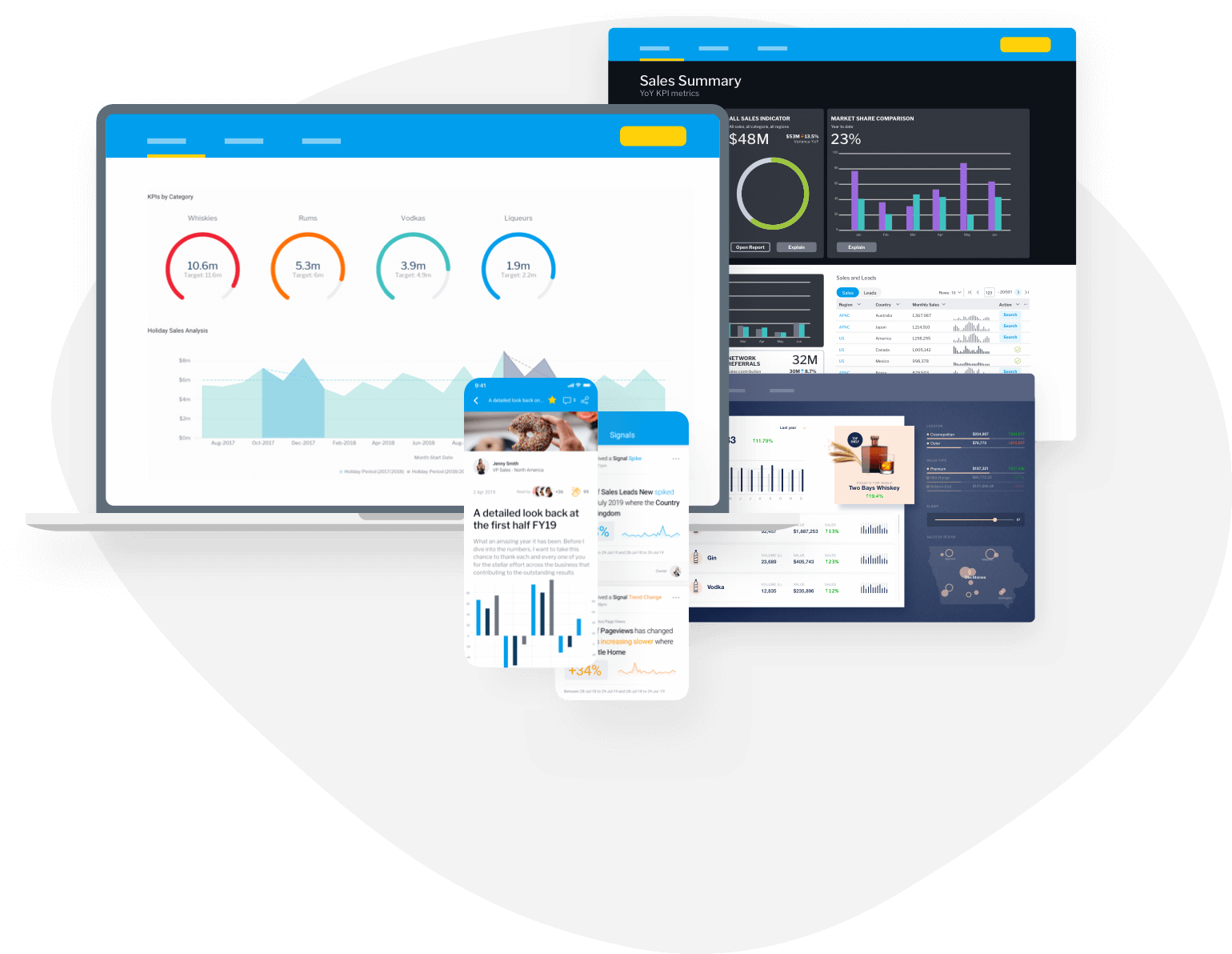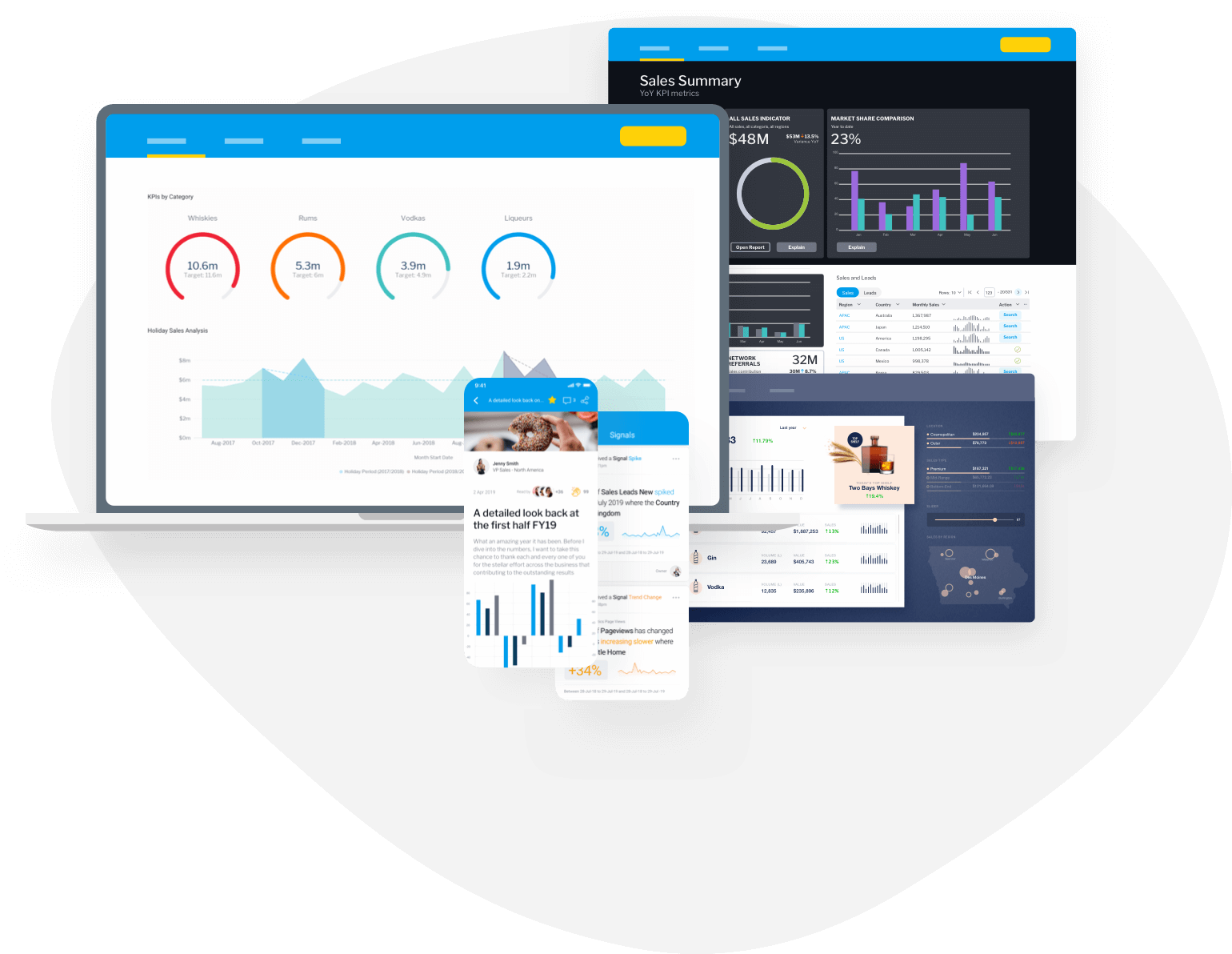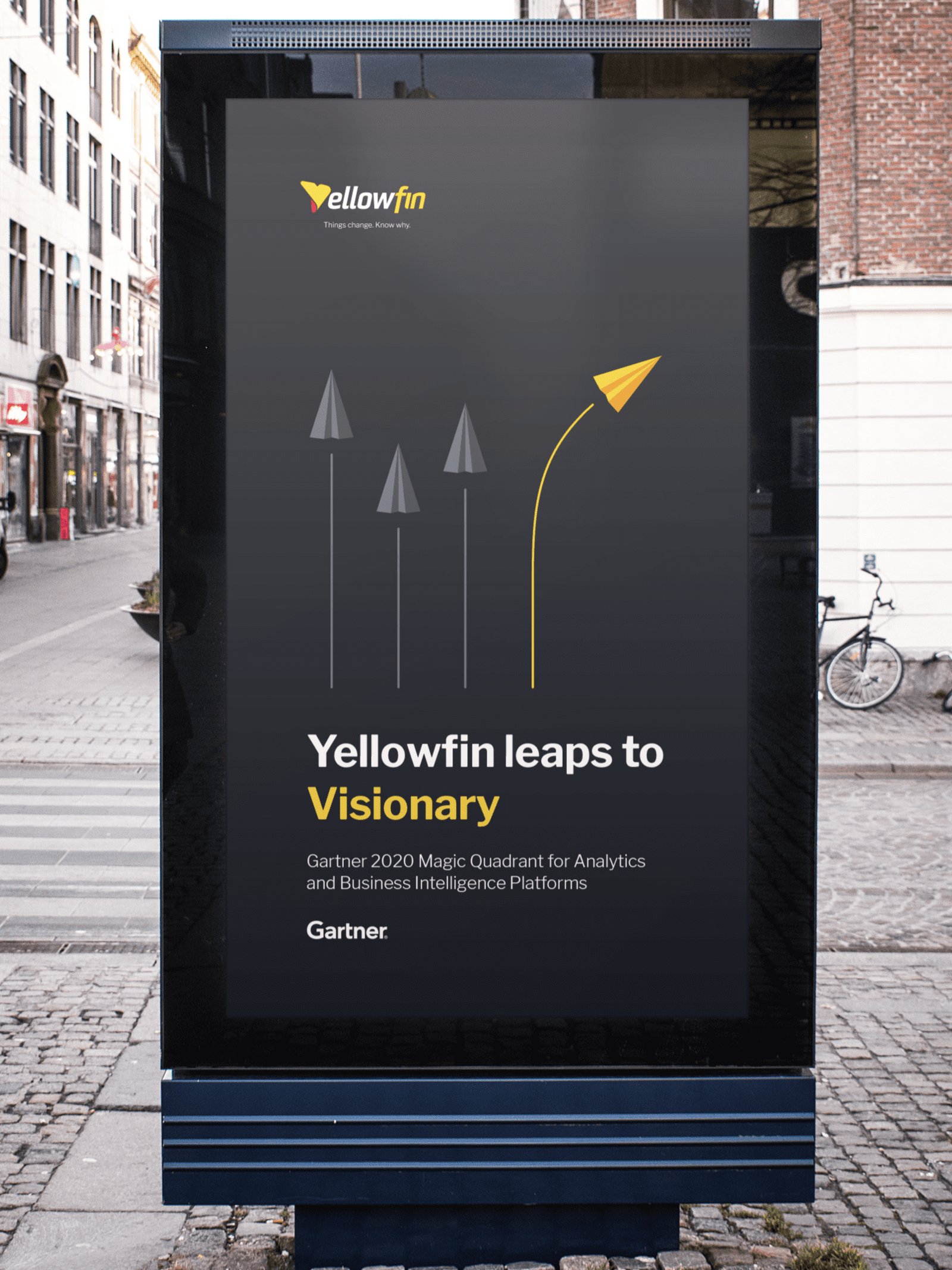Last week it was announced that Yellowfin jumped to Visionary in the Gartner 2020 Magic Quadrant for Analytics and BI Platforms. Toot toot! This is a massive achievement for the entire Yellowfin team putting us in the same room as products by the biggest players on the planet.
What makes it so special is that we are a privately funded, Melbourne based organisation smashing it against huge, cashed-up tech giants. It really is another fantastic (untold) story of Australian tech innovation leading the way in a world dominated by 'the valley'.
It's already an amazing effort that for 6 years Yellowfin has been recognised in the Gartner Magic Quadrant - but to jump to visionary for our “...ability to execute and completeness of vision” against organisations that have product design and development teams bigger than most Australian towns, shows that funding and size are not pre-requisites.
So, what else can be learned through our experience by other local digital product companies wanting to take it to the rest of the world? Whilst I'm not the best person to talk about specific funding models or business, sales, and startup strategy, I can talk about what I believe it took at our end to create a product now recognised as visionary.
A visionary CEO
Let's start at the top. Yellowfin has a very product-focused CEO who is not only prepared to ‘talk the talk’ about what the future may hold but also back his words by putting the entire organisation behind the vision. This has included:
- Investing in automation way before competitors
- Focusing on the needs of the end (business) user, not just data analysts
- Breaking out of the dashboard paradigm
It's risky and takes guts to put everything you have worked for on the line to do things most of our competitors are not even considering. There are a lot of CEOs that are driven purely by numbers but I think a product company must be led by a person who still gets up every day wanting to build a great product.
A true 'lighthouse brand' mentality
Yellowfin is a lighthouse brand in every sense of the world. That is, it strives to lead the way, not follow the competition, behave as a true disruptor, and deviate from what most of the category do. This ethos filters through everything we do from the words we choose to use in marketing campaigns, a business strategy that includes the decision to hold off significant outside investment and, most importantly, our product and the features we choose to invest in. Having a lighthouse approach gives everyone the license to do things differently.
An organisation willing to change fast, adapt, and move on from failures.
You don't get to 'Visionary' without a few mess-ups along the way. Whilst there has been a consistent drive to be innovative and visionary, this does not mean the vision has not evolved, sometimes significantly, maybe after a late-night learning or an "ah-ha" moment. This can only work when the organisation is comfortable with change - quickly shifting focus and moving into a new place. Our smaller team enables us to be nimble and adapt rapidly to changing demands, and focus on the priority items that contribute to the vision.
A diverse, collaborative, and tight product design and development team.
Much like successful creative teams (or songwriting teams), the relationship between key players in the product team needs to work. There is give and take, agreement and disagreement, and lots of defining moments. Each player brings something unique to the table and ideas are built in a way that I think could not be achieved if we were acting as individuals.
Perfection (on new features) is a miracle
Acceptance that everything will not be done upfront on new features is a concept I wrestle with the most. I hate inconsistency, unfinished design, less than perfect UX...damn that stuff makes me wriggle and sweat. But when you are doing things no one else is even trying, the focus has to be on delivering the core functionality of the feature.
Pushing hard on automation, data storytelling, and augmented analytics put us in a space where we didn't really know how new complex features would perform (or how they would be used) until they were built. It's pretty hard to get the UX spot-on in this situation but, also, there is no benchmark to reference. We created entirely new (not just better) 'visionary' experiences and, as much as it hurts me, we lived the world of iterative MVP product development. In this situation, we allowed the UX and subsequent design to evolve.
From a product design and experience perspective, speed and agility to innovate and do the ‘new’ comes at a cost - perfection. But if you spend all of your time focusing on the precise location of a button and not the way that button behaved, you just can't move fast enough or the team required becomes so big it slows things down. Do this and by the time you get everything 'perfect', the feature probably isn't visionary anymore. Importantly, this is where design systems and processes and building and fostering a design culture outside of the design team really come into play, at least to limit the 'damage' a fast, iterative way of working can create.
Finally, focus on your core
Being visionary, I believe, is also a reflection on the approach we take with our core product - dashboards.
Our latest dashboard release is still incredibly innovative and pushes the boundary in terms of flexibility, extensibility, and ease of use. But, as there is an existing design paradigm that we were trying to adapt, we could afford to be more precise with what we were trying to create.
User experience and design were not compromised and we knowingly let the detail in design and experience delay release in order to create a truly world-class product. This meant at times slipping out of agile where the quest for perfection took precedence over MVP principles. Ultimately, we believed it super important that no compromises be made on our core product.


Reviewing the journey to Yellowfin being named ‘Visionary’ without the clutter of being a big, cumbersome organization has helped identify the main factors I believe really made a significant impact and contributed to our recent success. There are of course a myriad of others.
You can download a copy of the Gartner 2020 Magic Quadrant for Analytics and BI Platforms and explore why Gartner recognized Yellowfin as Visionary.
Get the Gartner 2020 Magic Quadrant report
Download the complete Gartner 2020 Magic Quadrant report for Analytics and BI Platforms to see how Gartner evaluated Yellowfin and other analytics platforms.

